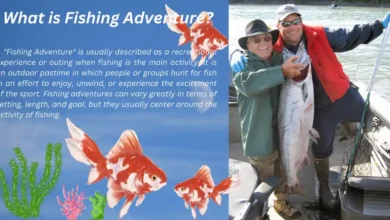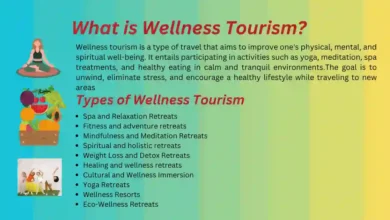
Impacts of Tourism on Mount Everest
Tourists seeking adventure have long been attracted to Mount Everest, the highest peak in the world. However, beneath its majestic exterior lies a troubling reality. In this article, we explore the negative impacts of tourism on Mount Everest, focusing on environmental degradation and cultural erosion. Tourism is destroying the delicate ecosystem of the mountain, from littered base camps to disappearing forests. Furthermore, the influx of tourists is eroding the unique cultures that have thrived in the region for generations. We will also discuss the importance of sustainable practices to preserve Everest’s cultural heritage and protect its natural beauty.
Environmental Degradation
A legacy of environmental degradation, the constant stream of tourists has left scars on Mount Everest’s once-pristine landscape. Large quantities of abandoned oxygen cylinders, food packaging, and human garbage have spoiled once-pristine base camps and trekking routes. Excessive littering harms the delicate ecosystems that coexist in the area and damages the area’s natural attractiveness.
Deforestation and Habitat Damage
In the delicate ecosystems surrounding Mount Everest, widespread deforestation and habitat damage have occurred due to the unquenchable demand for firewood, building materials, and infrastructure development to serve tourists. The rich forests that formerly covered the foothills are disappearing at a startling rate, displacing native plants and animals and upsetting the ecosystem’s delicate equilibrium.
Climate Change Exacerbation
Climatic change is made more dire by the massive carbon footprint that tourism leaves on Mount Everest. Tourists contribute heavily to carbon emissions, which accelerates the rate of global warming, along with the usage of fossil fuels for lodging and transportation. Significant effects include:
- The retreat of glaciers.
- Changes in precipitation patterns.
- An increase in the frequency and severity of extreme weather events.
Rising temperatures also cause these effects.
Cultural Erosion
The rich fabric of local cultures and customs that have flourished in the area for future generations has been undermined by the quick commercial and commodification of Mount Everest. A wave of cultural uniformity brought about by the flood of tourists has diminished the distinctive character and traditions of the local inhabitants. Social cohesion and authentic cultural values are disappearing as economic concerns replace traditional behaviors and ideals.
Safety Risks and Overcrowding
Mount Everest, once the domain of brave explorers, is today a crowded route packed with travelers eager to reach the top. The exponential increase in climbers and trekkers has resulted in overpopulation, which raises concerns about safety and lessens the wilderness experience. Memorable events such as landslides, altitude sickness, and fatalities are tragic examples of the dangers that exist among the crowded slopes.
Economic Inequality
Even though some people have benefited economically from tourism on Mount Everest, the rewards are sometimes skewed, which keeps local communities’ economic disparities alive. Many locals experience marginalization and need to be included in the financial benefits that tourism brings. Exploitative work practices, unequal wealth distribution, and resource monopolization exacerbate socioeconomic disparities. These factors separate the haves from the have-nots.
Mountaineering Accidents and Fatalities
The temptation of climbing Mount Everest has a high price, as mountaineering accidents and fatalities among the multitude of aspirants competing for the top are becoming all too prevalent. Inexperienced climbers, crowded areas, unfavorable weather, and logistical difficulties exacerbate the dangers that climbers encounter. Providing safety on the highest peak in the world presents more challenges as rescue operations frequently involve great dangers and put further strain on already scarce resources.
Infrastructure Strain and Resource Depletion
The Everest region’s insufficient infrastructure is under enormous stress due to the growing tourism business, which is causing resource depletion and environmental degradation to worsen. The lack of access to sanitary facilities, clean water, and medical care presents serious risks to the health of both visitors and locals. A cycle of unsustainable development continues, and environmental deterioration is exacerbated when natural resources are harvested to support tourism, further depleting the region’s limited resources.
Disruption of Indigenous Livelihoods
The monetization of Mount Everest has thrown off the balance of the customs and economic activity that support indigenous populations. The tourism industry is becoming increasingly dominant, pushing out traditional industries like farming and raising animals. Indigenous communities face growing danger as their traditional methods of life become less prevalent. They also have to deal with economic disruption and cultural displacement.
Legal and Regulatory Challenges
In the middle of a complex web of conflicting interests and management concerns, effective regulation and enforcement of environmental protection measures, safety standards, and responsible tourist activities offer considerable challenges. Insufficient regulation could encourage unrestrained resource extraction from Mount Everest, so escalating the cycle of pollution and inequality in society.
Conclusion
The negative impacts of tourism on Everest are numerous and complex, connecting socioeconomic, cultural, and environmental elements in a delicate dance of devastation. At this pivotal point in time, sustaining the cultural legacy of indigenous peoples, safeguarding the delicate ecosystems, encouraging sustainable tourism practices, and ensuring the long-term preservation of Mount Everest for future generations will all require a concentrated effort. We can only successfully negotiate the difficult terrain ahead and pave the way for a more sustainable and just future for Mount Everest and its people if we work together with steadfast devotion.




